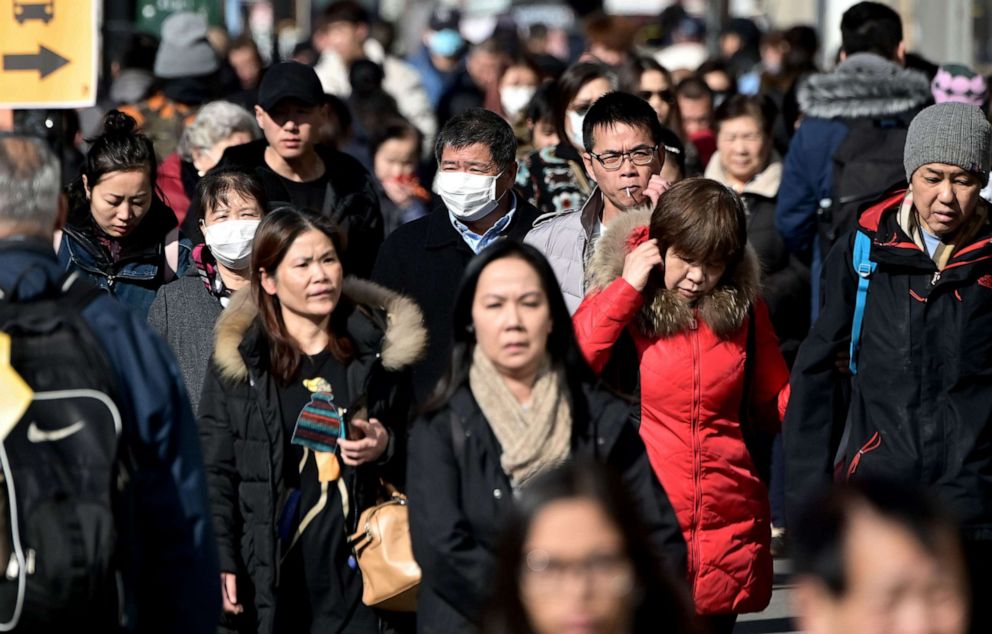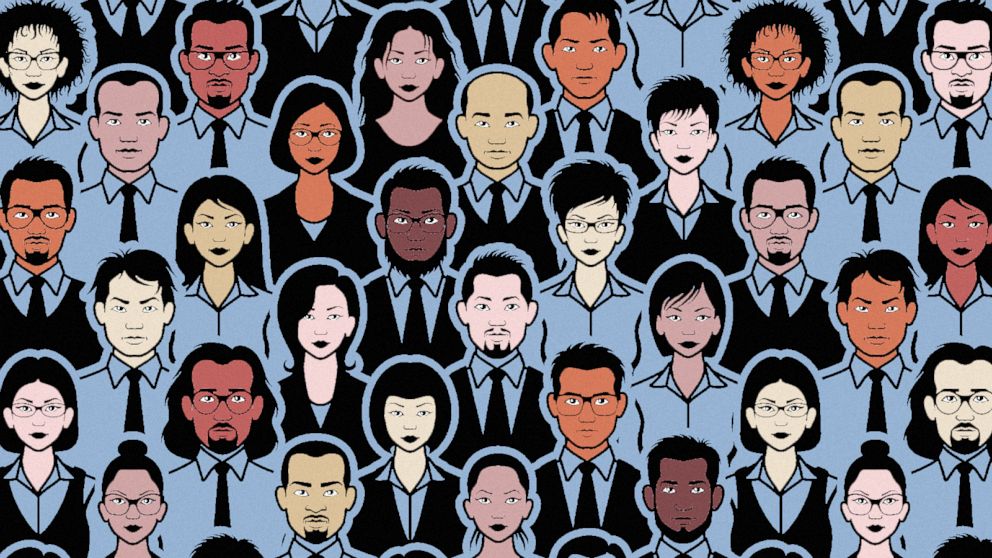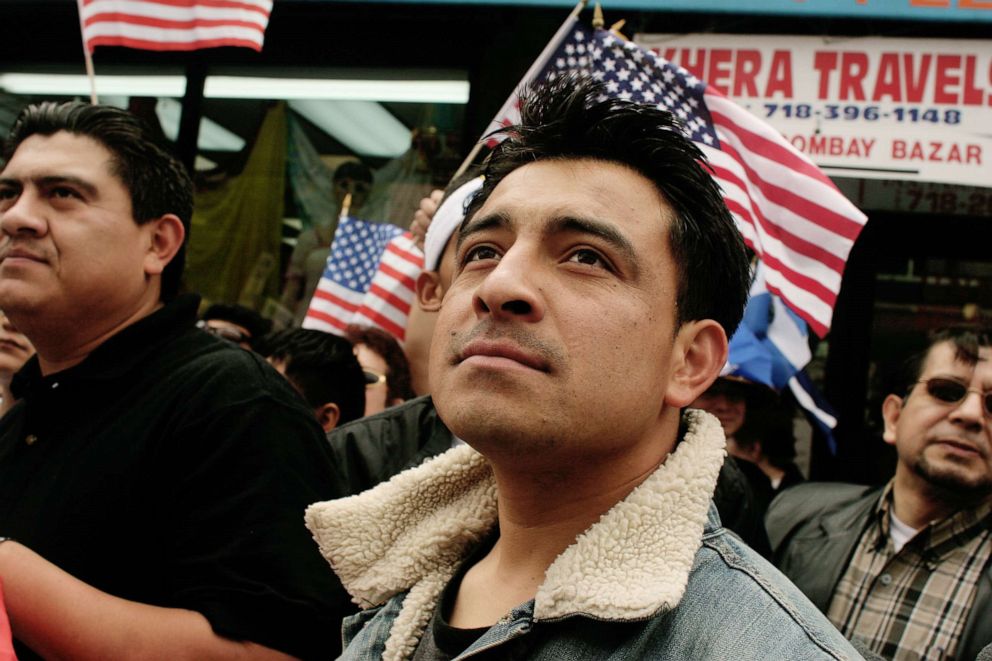Why Asian Americans often appear underrepresented in polling and research
There are almost 20 million people of Asian descent in the U.S.
But if you looked at national polling and medical research, they might appear largely invisible in important conversations about politics, race and other issues, a factor that has plagued the Asian community and other minorities for decades.
According to Neil Ruiz, the associate director of race and ethnicity research at Pew Research, Asians tend to be underrepresented in national polling where about 3% of the respondents identify as Asian American, which is lower than their share of the total population of 6%.
"We correct for this in our weighting by weighting up the Asian American respondents to be represented proportional to their share of the population," Ruiz added.
Weighting in polling adjusts the data so the sample more accurately reflects the population. This is done by weighting up the responses of underrepresented groups and weighting down overrepresented groups.
Experts say the problem is twofold. On the one hand, there generally aren't enough Asians in polling samples to meet the threshold pollsters deem necessary to break out the group in published research.
On the other, experts say that polling Asians has presented some challenges historically, such as language barriers.
The end result is that Asians often do not appear as a group in published reports, even though they are surveyed by pollsters.
In a recent NPR/PBS/Marist Poll on race relations in the United States, Asians were not listed under adults categorized by race.
Some large polls like the 2016 exit poll by Edison Research for the National Election Pool do include and break out findings among Asians. However, the Pew Research report using the Edison exit poll data discussed results among white, Black and Latino Americans, but did not publish Asians as a subgroup.
"While the original 2016 Edison exit poll did include preferences among Asian voters, trend data on Asian Americans are not consistently available in exit polling," Ruiz explained. "Even in recent election years, sample sizes for Asian Americans have been relatively small, and sample sizes among Asian Americans two decades ago were too small to report trends from Asian Americans confidently."
When it comes to medical research, there is a discrepancy in clinical trials, with Asian Americans often underrepresented, said Dr. Mishal Reja, an internal medicine physician and ABC News medical contributor. This is especially problematic as members of the AAPI community are at increased risk of cancer, diabetes and liver conditions, Reja said.
Why is it so difficult to gather data on AAPI communities?
One big reason why it's so difficult to gather data on AAPI communities is because Asian Americans make up just 6% of the total U.S. population. By comparison, Black Americans make up 13.4% and Hispanic Americans make up 18.5%, according to the Census Bureau.
According to Pew Research, a typical representative survey has 1,000 adult respondents, which it says provides a reasonably accurate reflection of the larger population. A larger sample would incur more cost without a proportionally meaningful reduction in the margin of error.
A common rule is to not publish subgroup poll results with fewer than 100 respondents, according to Pew. So in a representative survey of 1,000 U.S. adults, you would expect about 60 Asians polled, which is under that 100-respondent limit.
This was the case with the Marist Poll which was a survey of 1,249 adults where a subgroup would require around 8.5% of the overall survey sample size, according to Dr. Lee M. Miringoff, director of the Marist College Institute for Public Opinion.
"To report them as a separate group would not be an accurate representation of that separate group,” he said.

Additionally, although 38% of both U.S. Asians and Hispanics are not proficient in English, the Asian demographic has more linguistic diversity. On the other hand, pollsters can reach many Hispanics with a single Spanish translation, Gary Langer, president of Langer Research Associates and director of polling at ABC News, explained.
There is also a lack of culturally sensitive materials and recruitment efforts that tailor to each unique ethnic group within the AAPI community, Reja said.
And mistrust is a roadblock, especially when it comes to medical research, Dr. Yulin Hswen, an assistant professor in the department of epidemiology and biostatistics at the University of California, San Francisco, told ABC News. Similar to Black Americans, Asian Americans have faced a history of medical racism. For example, when the Bubonic plague reached Honolulu's Chinatown in 1899, the Board of Health set a controlled fire to burn buildings that displaced and injured almost exclusively Asian residents, and there was mistreatment targeted toward Asians.
This trauma was passed down from generation to generation and the community began to distrust governments, Hswen explained.
The country saw the racialization of disease play out again when the COVID-19 pandemic started in 2020. Former President Donald Trump's and others' remarks about the origins of the virus contributed to a rise in anti-Asian hate incidents around the country.
Hswen said there is not only a lack of racial diversity among medical research workers but also "a lack of cultural competency in general within the medical community and understanding and being responsive to certain cultural needs," which he says contributes to mistrust and a lack of representation.
Why does it matter?
In order to engage the electorate and encourage civic responsibility, people need to see their voices represented, said Howard Shih, director of research and policy at Asian American Federation.
"It's really important to know what are the major concerns of the community. We can't design and affect public policies without understanding what the needs of a community are," Shih added.

When it comes to medical trials, having representative data also matters a great deal "because what you see from the outcomes of clinical trials directly impacts medical care," Reja said.
"We know that genetic differences have an impact on medical outcomes so we're doing a disservice to our patients by not including them in statistics," he explained.
Since a 1985 government report concluded AAPI populations are healthier than all other racial groups in the U.S., there has been a lack of research funding for the community, as a 2019 JAMA Network study found.
That paucity of funding contributes to health care disparities, Reja said.
While the "model minority" myth, the perception that Asian Americans are singularly high achieving and more successful than the rest of the population, creates the idea that Asian Americans are well-off, the group has the highest income inequality of any other race in the U.S., according to Pew Research. Because health is tied to socioeconomic status, Hswen said, "a larger percentage of Asians are actually more at risk for serious health conditions than perceived."
What can be done about it?
Medical experts and institutions need to gain back the trust of the community, Hswen said, through communication and focus groups, for instance.
"That means really working on the ground with people in the communities and having people from the medical communities come to them," she said.
Targeted recruitment of clinical trial participants in predominantly Asian communities, partnerships with AAPI organizations and increased hires and training of culturally sensitive health providers and researchers are all important, Reja said.

When it comes to polling, organizations like the Asian American Federation actively work with government institutions to ensure they are collecting information at the right demographic level with appropriate tools. For the 2020 Census, they worked with community groups and relied on trusted voices of those organizations.
Others, like the National Asian American Survey, a nonpartisan polling organization, are creating their own surveys.
"That just shows you how overlooked it is that we as a community have to do our own or create our own polling essentially to get our voices heard," Shih said.



